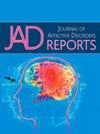The impact of prenatal maternal depression, during the COVID-19 pandemic on maternal postpartum depression: A prospective cohort study within the conception study
Q3 Psychology
引用次数: 0
Abstract
The COVID-19 pandemic introduced unprecedented disruptions impacting perinatal mental health. We aimed to quantify the association between prenatal depression (PD) and postpartum depression (PPD), within this context. Data were collected from Canadian pregnant individuals (aged≥18) through web-based questionnaires. Individuals who completed both a baseline questionnaire (06/2020 to 12/2021) and the 2-month postpartum follow-up, were included. PD was assessed with the Edinburgh Postnatal Depression Scale (EPDS), categorized as unlikely (EPDS 0–8), possible (9–11), highly possible (12–13), and probable (EPDS≥14). PPD was assessed at 2 months postpartum also using EPDS, and categorized as unlikely (EPDS 0–8), possible to probable (EPDS≥9). Self-reported data on sociodemographics, comorbidities, gestational age, anxiety (General Anxiety Disorder-7), stress, maternal hardship (CONCEPTION Assessment of Stress from COVID-19) were collected. We used a multivariate Poisson regression model to calculate relative risks (RRs) with 95 % confidence interval (CI) to assess the risk of PPD associated with PD. Among 1247 participants, 57.9 % had unlikely PD, 17.1 % possible PD, 9.3 % highly possible PD, 15.7 % probable PD. The overall prevalence of PPD was 39.5 %. Possible PD increased PPD risk (aRR 1.56, 95 % CI 1.18 – 2.05); Highly possible PD further heightened the risk (aRR: 2.24, 95 % CI 1.65 – 3.04); and the highest risk for probable PD (aRR 2.29, 95 % CI 1.66 – 3.15). PPD risk also increased with prenatal stress (aRR 1.07; 95 % CI 1.01 – 1.13) and nulliparity (aRR 1.26, 95 % CI 1.04 – 1.54). Addressing prenatal depression, especially during crises, is crucial to reduce PPD risk and improve maternal and child health.
COVID-19大流行期间产前产妇抑郁对产妇产后抑郁的影响:妊娠研究中的前瞻性队列研究
COVID-19大流行带来了前所未有的破坏,影响了围产期心理健康。在此背景下,我们旨在量化产前抑郁(PD)和产后抑郁(PPD)之间的关系。数据通过网络问卷从加拿大孕妇(年龄≥18岁)中收集。研究包括完成基线问卷(2020年6月至2021年12月)和产后2个月随访的个体。采用爱丁堡产后抑郁量表(EPDS)对PD进行评估,分为不太可能(EPDS 0-8)、可能(EPDS 9-11)、极可能(12-13)和可能(EPDS≥14)。产后2个月也使用EPDS评估PPD,并将其分为不太可能(EPDS 0-8)、可能至可能(EPDS≥9)。收集有关社会人口统计学、合并症、胎龄、焦虑(一般焦虑障碍-7)、压力、母亲困难(COVID-19压力评估)的自我报告数据。我们使用多元泊松回归模型计算相对风险(rr), 95%置信区间(CI)评估PPD合并PD的风险。在1247名参与者中,57.9%的人不太可能患有帕金森病,17.1%的人可能患有帕金森病,9.3%的人高度可能患有帕金森病,15.7%的人可能患有帕金森病。PPD的总患病率为39.5%。可能的PD增加PPD风险(aRR 1.56, 95% CI 1.18 - 2.05);高度可能的PD进一步增加了风险(aRR: 2.24, 95% CI 1.65 - 3.04);可能发生PD的风险最高(aRR 2.29, 95% CI 1.66 - 3.15)。产前应激也增加PPD风险(aRR 1.07;95% CI 1.01 - 1.13)和零平价(aRR 1.26, 95% CI 1.04 - 1.54)。解决产前抑郁问题,特别是在危机期间,对于减少产后抑郁风险和改善孕产妇和儿童健康至关重要。
本文章由计算机程序翻译,如有差异,请以英文原文为准。
求助全文
约1分钟内获得全文
求助全文
来源期刊

Journal of Affective Disorders Reports
Psychology-Clinical Psychology
CiteScore
3.80
自引率
0.00%
发文量
137
审稿时长
134 days
 求助内容:
求助内容: 应助结果提醒方式:
应助结果提醒方式:


